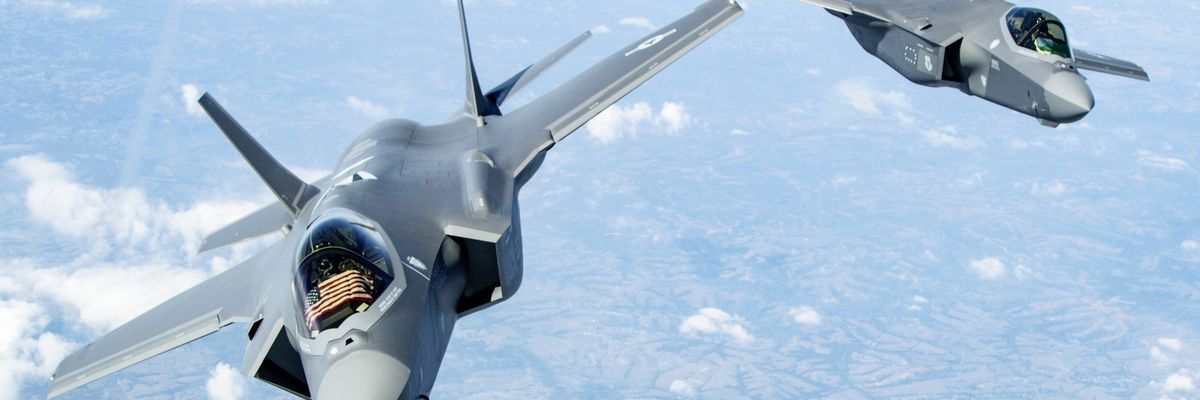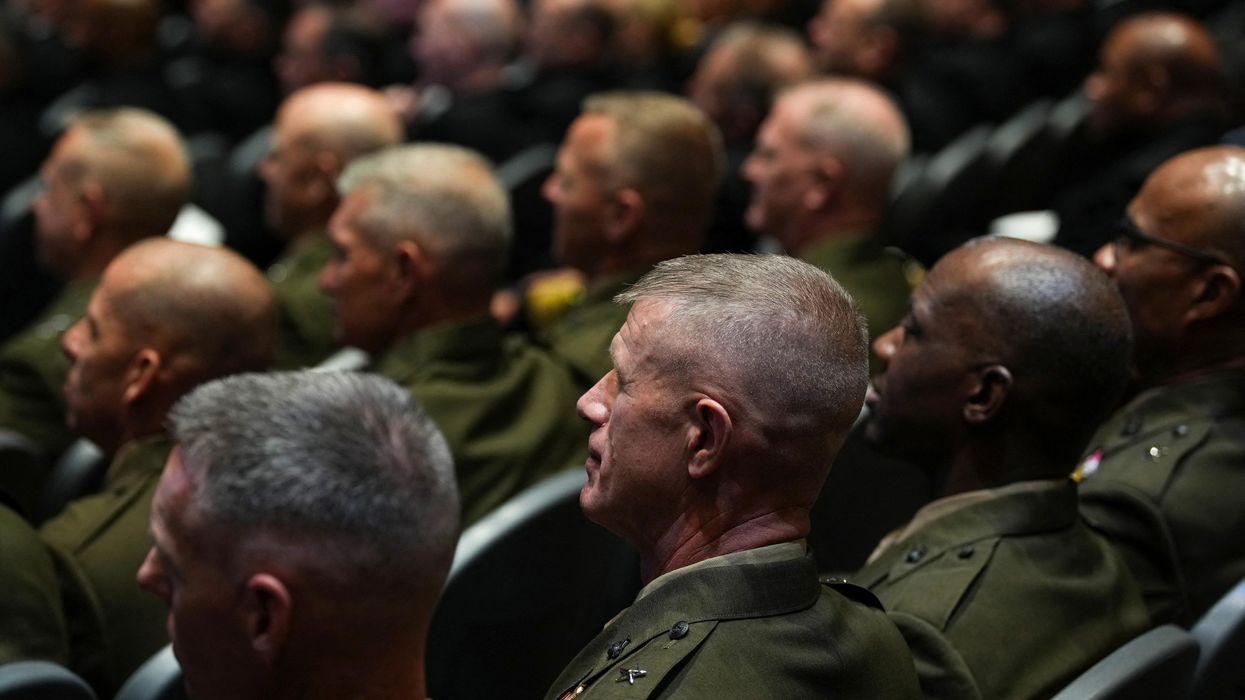Cancel culture is a common, almost viral, term in political and social discourse these days. Basically, somebody expresses views considered to be outrageous or vile or racist or otherwise insensitive and inappropriate. In response, that person is “canceled,” perhaps losing a job or otherwise sidelined and silenced. In being deplatformed by Twitter, Facebook, and other social media sites, for instance, this country’s previous president has, it could be argued, been canceled — at least by polite society. More than a few might add, good riddance.
Cancel culture is all around us, with a single glaring exception: the U.S. military. No matter how poorly a major weapons system performs, no matter how much it goes over budget, no matter how long it takes to field, it almost never gets canceled. As a corollary to this, no matter how poorly a general performs in one of our twenty-first-century wars, no matter his lack of victories or failure to achieve mission objectives, he almost never gets cashiered, demoted, or even criticized. A similar thing could be said of America’s twenty-first-century wars themselves. They are disasters that simply never get canceled. They just go on and on and on.
Is it any surprise, then, that a system which seems to eternally reward failure consistently produces it as well? After all, if cancel culture should apply anywhere, it would be to faulty multibillion-dollar weapons systems and more than a few generals, who instead either get booted upstairs to staff positions or retire comfortably onto the boards of directors of major weapons companies.
Let’s take a closer look at several major weapons systems that are begging to be canceled — and a rare case of one that finally was.
* The F-35 stealth fighter: I’ve written extensively on the F-35 over the years. Produced by Lockheed Martin, the plane was at one point seven years behind schedule and $163 billion over budget. Nonetheless, the U.S. military persisted and it is now nearing full production at a projected total cost of $1.7 trillion by the year 2070. Even so, nagging problems persist, including engine difficulties and serious maintenance deficiencies. Even more troubling: the plane often can’t be cleared for flying if lightning is anywhere in the area, which is deeply ironic, given that it’s called the Lightning II. Let’s hope that there are no thunderstorms in the next war.
* The Boeing KC-46 tanker: A tanker is basically a flying gas station, air-to-air refueling being something the Air Force mastered half a century ago. Never underestimate the military’s ability to produce new problems while pursuing more advanced technology, however. Doing away with old-fashioned windows and an actual airman as a “boom operator” in the refueling loop (as in a legacy tanker like the KC-135), the KC-46 uses a largely automated refueling system via video. Attractive in theory, that system has yet to work reliably in practice. (Maybe, it will, however, by the year 2024, the Air Force now says.) And what good is a tanker that isn’t assured of actually transferring fuel in mid-air and turns out to be compromised as well by its own fuel leaks? The Air Force is now speaking of “repurposing” its new generation of tankers for missions other than refueling. That’s like me saying that I’m repurposing my boat as an anchor since it happened to spring a leak and sink to the bottom of the lake.
* And speaking of boats, perhaps you won’t be surprised to learn that the Navy has had serious problems of its own with its most recent Gerald R. Ford-class aircraft carriers. That service started building carriers in the 1920s, so one might imagine that, by now, the brass had gained some mastery of the process of updating them and building new ones. But never underestimate the allure of cramming unproven and expensive technologies for “next generation” success on board such vessels. Include among them, when it comes to the Ford-class carriers, elevators for raising munitions that notoriously don’t operate well and a catapult system for launching planes from the deck (known as the Electromagnetic Aircraft Launch System or EMALS) that’s constantly breaking down. As you might imagine, not much can happen on an aircraft carrier when you can’t load munitions or launch planes effectively. Each new Ford-class carrier costs in the neighborhood of $14 billion, yet despite all that money, it simply “isn’t very good at actually being a carrier,” as an article in Popular Mechanics magazine bluntly put it recently. Think of it as the KC-46 of the seas.
* And speaking of failing ships, let’s not forget the Navy’s Littoral Combat Ships (LCS), which have earned the nickname “little crappy ships.” A serious propulsion design flaw may end up turning them into “floating garbage piles,” defense journalist Jared Keller recently concluded. The Navy bought 10 of them for roughly half a billion dollars each, with future orders currently on hold. Lockheed Martin is the lead contractor, the same one responsible for the wildly profligate (and profitable) F-35.
* Grimly for the Navy, problems were so severe with its Zumwalt-class of stealth destroyers that the program was actually canceled after only three ships had been built. (The Navy initially planned to build 32 of them.) Critiqued as a vessel in search of a mission, the Zumwalt-class was also bedeviled by problems with its radar and main armament. In total, the Navy spent $22 billion on a failed “next generation” concept whose cancelation offers us that utter rarity of our moment: a weapon so visibly terrible that even the military-industrial complex couldn’t continue to justify it.
Chief of Naval Operations Admiral Michael Gilday has gone on record as rejecting the idea of integrating exotic, largely untried and untested technologies into new ship designs (known in the biz as “concurrent development”). Godspeed, admiral!
Much like the troubled F-35 and the Littoral Combat Ship, the Zumwalt’s spiraling costs were due in part to the Pentagon’s fixation on integrating just such “leading-edge” technologies into designs that themselves were in flux. (Not for nothing do military wags refer to them as bleeding edge technologies.) Such wildly ambitious concurrent development, rather than saving time and money, tends to waste plenty of both, leading to ultra-expensive less-than-fully effective weapons like the Zumwalt, the original version of which had a particularly inglorious breakdown while passing through (or rather not passing through) the Panama Canal in November 2016.
Given such expensive failures, you might be forgiven for wondering whether, in the twenty-first century, while fighting never-ending disastrous wars across significant parts of the planet, America’s military isn’t also actively working to disarm itself. Seriously, if we’re truly talking about weapons that are vital to national defense, failure shouldn’t be an option, but far too often it is.
With this dubious record, one might imagine the next class of Navy vessel could very well be named for Philip Francis Queeg, the disturbed and incompetent ship captain of novelist Herman Wouk’s The Caine Mutiny. It’s also quite possible that the Pentagon’s next advanced fighter jet will fulfill former Martin Marietta CEO Norman Augustine’s estimate from the 1980s that, by the year 2054, the entire Pentagon budget would be needed to buy one — and only one – combat aircraft. Perhaps a Death Star for America’s new Space Force?
Is it even possible to cancel a major weapons system like the F-35?
The Navy’s Zumwalt-class of destroyers was such a disaster that the program was indeed canceled a mere $22 billion along the line, but what about a program like the F-35? Is it even possible to cancel such a behemoth of a weapons system?
That question was put to me by Christian Sorensen, author of Understanding the War Industry, who like me is a member of the Eisenhower Media Network. Overpriced and underperforming weapons, Sorensen noted, are a feature of, rather than some sort of bug in, the military-industrial complex as future profits for giant weapons companies drive design and fielding decisions, not capability, efficiency, or even need. He’s right, of course. There may even be a perverse incentive within the system to build flawed weapons, since there’s so much money to be made in troubleshooting and “fixing” those flaws. Meanwhile, the F-35, like America’s leading financial institutions in the 2007-2009 Great Recession, is treated as if it were too big to fail. And perhaps it is.
Jobs, profits, influence, and foreign trade are all involved here, so much so that mediocre (or worse) performance is judged acceptable, if only to keep the money flowing and the production lines rolling. And as it happens, the Air Force really has no obvious alternative to the F-35. During the 1950s and 1960s, the aerospace industry used to build a wealth of models: the “century series” of fighters, from the F-100 through the F106. (The notorious F-111 was an early version of the F-35.) The Air Force could also tap Navy designs like for the F-4 Phantom. Now, it’s essentially the F-35 or bust.
In its obvious desperation, that service is turning to older designs like the F-15 Eagle (circa 1970) and the F-117 Stealth Fighter (circa 1980) to bridge the gap created by delays and cost overruns in the F-35 program. Five decades after its initial flight, it’s something of a miracle that the F-15 is still being produced — and, of course, an obvious indictment of the soaring costs and inadequate performance of its replacements.
The exorbitant pricing of the F-35, as well as the F-22 Raptor, has recently even driven top Air Force officials to propose the creation of an entirely new “low cost” fighter. Irony of ironies, once upon a time in another universe, the F-35 was supposed to be the low-cost replacement for “fourth-generation” F-15s and F-16s. Last month, current Air Force Chief of Staff General Charles “CQ” Brown exhibited the usual convoluted and nonsensical logic of the military-industrial complex when he discussed that new dream fighter:
“If we have the capability to do something even more capable [than the F-16] for cheaper and faster, why not? Let’s not just buy off the shelf, let’s actually take a look at something else out there that we can build.”
In other words, why buy already-proven and much-improved variants of the F-16 when you could design and build an entirely new plane from scratch, supposedly in a “cheaper” and “faster” manner? Of course, given that new fighters now take roughly two decades to design and field, that’s an obvious fantasy from the start. If my old service — I’m a retired Air Force officer — wants fast and cheap, it should simply go with the tried-and-true F-16. Yet an entirely new plane is so much more attractive to a service under the spell of the giant weapons makers, even as the F-35 continues to be produced under its old, now demonstrably false, mantra of cheaper-and-better.
As Christian Sorensen summed up our present situation to me: “If an exorbitant under-performing platform like the F-35 can’t be canceled, then what are we doing? How do we ever expect to bring home the troops [garrisoning the globe] if we can’t even end one awful weapons platform or address the underlying systemic issues that cause such a platform to be created?”
Of course, an “alert and knowledgeable citizenry” like the one that President Dwight D. Eisenhower described in his 1961 farewell address to the nation (in which he first warned of the dangers of a “military-industrial complex” gaining “unwarranted influence”) would work to cancel wasteful, unnecessary weapons systems like the F-35. But what if the forces in place in American society act to keep that very citizenry apathetic and ignorant instead?
Call me jaded, but I can’t see the F-35 being canceled outright, even though it hasn’t technically yet reached the stage of full production. Likely enough, however, such a cancellation would only happen in the wake of major cuts to the defense budget that forced the services to make hard choices. But such cuts clearly aren’t on the agenda of a Congress that continues to fund record Pentagon budgets in a bipartisan fashion; a Congress that, unchecked as it is by us citizens, simply won’t force the Pentagon to make tough choices.
And here’s one more factor to consider as to why cancel culture is never applied to Pentagon weaponry: Americans generally love weaponry. We embrace weapons, celebrate them, pose with them. To cancel them, we’d have to cancel a version of ourselves that revels in high-tech mayhem. To cancel them, we’d have to cancel a made-in-America mindset that equates such weaponry — the stealthier and sexier the better — with safety and security, and that sees destruction overseas as serving democracy at home.
America’s military-industrial complex will undoubtedly keep building the fanciest, most expensive weaponry known to humanity, even if the end products are quite often ineffective and unsound. Yet as scores of billions of dollars are thrown away on such weapons systems, America’s roads, bridges, and other forms of infrastructure continue to crumble. How about it, America? Why not cancel those weapons and build back better at home?
This article has been republished with permission from TomDispatch.
















